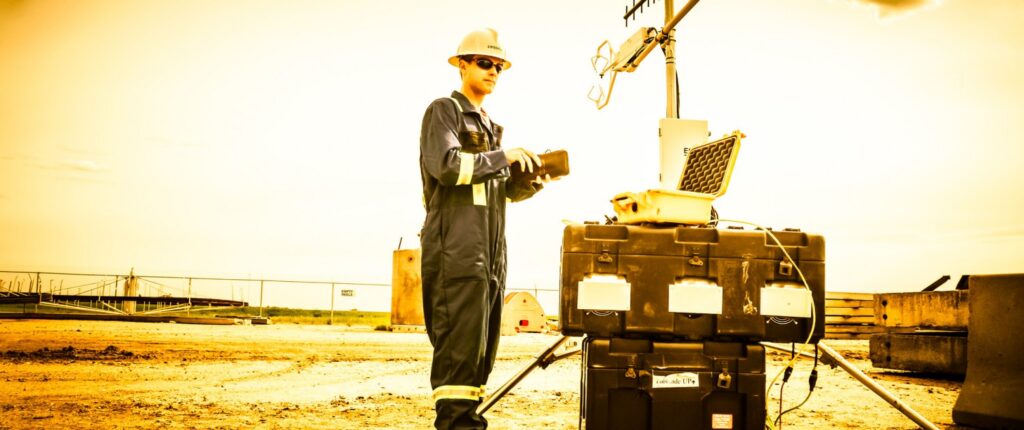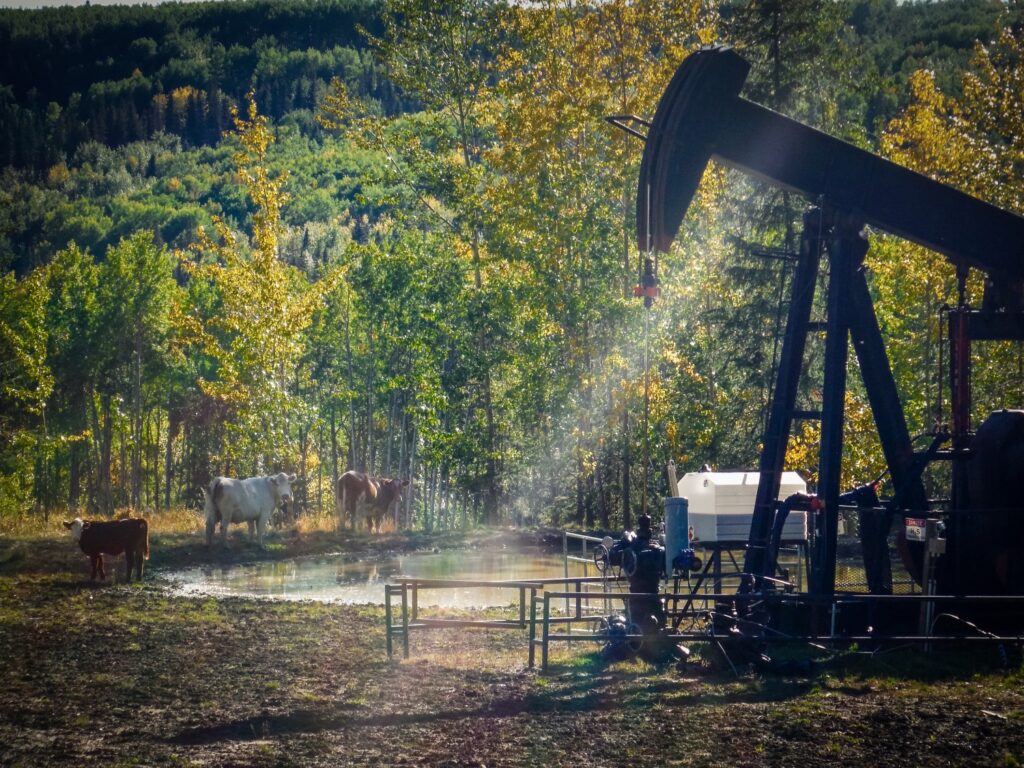Employing Technology to Measure and Monitor Emissions
Reducing emissions is critical for the health of our planet – but we can’t reduce what we don’t measure. Dr. David Risk, a StFX earth science professor and director of the FluxLab at StFX, explains how his research team has developed technology to track the emissions of oil and gas sites.
Recently the FluxLab research team published a study that involved measuring methane at 7,000 oil and gas sites in western Canada using truck-based sensors. The resultant datasets are critical for improving inventories and crafting regulation to achieve 75% reduction targets.

The same research team also used an aircraft-based lab to measure emissions from offshore oil platforms in Canada’s east, which in the process raised important questions. The details of both studies are explained in further detail below.
Big Impacts of Measuring Emissions
In a large-scale study, the FluxLab research team measured methane emissions at ~7,000 sites across six major oil and gas producing regions in Canada to examine regional emission trends, and to derive an inventory estimate for Canada’s upstream oil and gas sector. To our knowledge, this is the largest bottom-up oil and gas measurement study of its kind, in any country. Outcomes from this study will:
- help improve inventories including geographic accuracy and geographic variations in emissions intensity per barrel
- craft efficient and effective regulation that focuses on the right sources and the low hanging fruit
- form datasets for testing ESG claims of oil and gas producers
- launch studies to re-vision Canada’s oil and gas sector as reducing high methane-intensity production and prioritizing cleaner forms of oil and gas

As well, under Natural Resources Canada’s Emissions Reduction Fund, the FluxLab team built and deployed an aircraft system to measure emissions from offshore oil and gas industry in Newfoundland and Labrador. This project involved a high degree of technical and logistical challenge because there was no Canadian aircraft provider capable of making the necessary measurements.
In only two months, our team collaborated with PAL Aerospace to build and launch a Twin Otter-based methane measurement platform capable of long-distance operation in the onshore and offshore – a measurement platform that can be used in future years for verifying offshore platform emissions in Canada.

Emissions from these facilities agreed with regulatory reports, which is an important finding since these facilities are thought to emit less methane per barrel produced than almost any other type of oil and gas production in Canada. The study raised important questions around flaring efficiency. Additionally, the study launched new conversations and projects between academics, producers, and the offshore regulator.
Arming Future Climate Scientists
The lab team has been very involved in setting up and running monitoring systems for Carbon Capture and Storage sites. We are similarly interested in monitoring for renewable natural gas and hydrogen – because leaks of both are harmful and heavy growth is expected in these sectors.

The FluxLab research group is run with the help of a project management team including two research associates, who help conceptualize the projects, secure partners, and funding, and orchestrate often complex logistics. Most of the individuals who conduct the technical studies are trainees, whether undergraduate students, graduate students, or postdoctoral fellows. My primary work is to train the trainees, to help them design and execute the project, and to help them deliver professional and internationally respected scientific outcomes.
FluxLab aims to move lab-developed technology and expertise to market. We also aim to arm trainees with the skills to engage stakeholders, to start things, to be strategic, and to be great scientists. Students who graduate from this research program are headhunted by government and cleantech companies, but some of them also embrace a strategic-thinking entrepreneurial mindset and go on to form their own companies.
The lab group is unique in that we have numerous successful spin-off business and licenses. These businesses are helping address NetZero challenges in Canada and globally and employ 30-40 people in Canada.
Our work is popular and influences many stakeholder groups, however geographic boundaries are a challenge. It is easier for researchers based in Ottawa to work with government, or for those in Calgary to work with industry, when so many projects get conceived face-to-face over a coffee, a meal, or a drink.
To cross these geographic communication barriers, we started publishing annual, graphics-oriented newsletter to give extra legs to the research outcomes and to help get recognized….so that people will call with their problems, or ideas, or to collaborate. Being noticed is an important part of the process.
The Clean50 award means that FluxLab can get involved in more corporate or government roundtables and projects to drive harder towards methane and greenhouse mitigation.

















